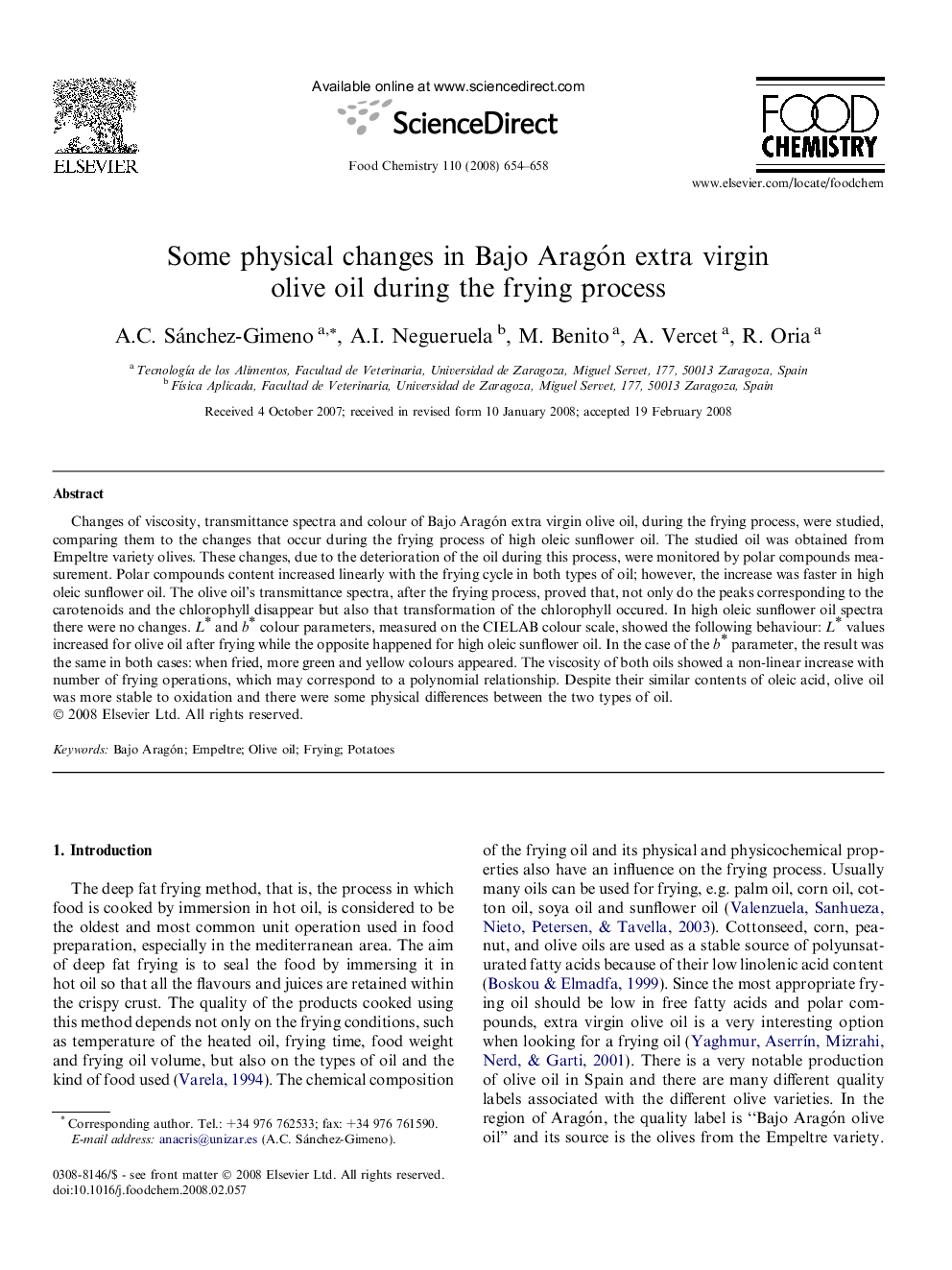| کد مقاله | کد نشریه | سال انتشار | مقاله انگلیسی | نسخه تمام متن |
|---|---|---|---|---|
| 1186600 | 963444 | 2008 | 5 صفحه PDF | دانلود رایگان |

Changes of viscosity, transmittance spectra and colour of Bajo Aragón extra virgin olive oil, during the frying process, were studied, comparing them to the changes that occur during the frying process of high oleic sunflower oil. The studied oil was obtained from Empeltre variety olives. These changes, due to the deterioration of the oil during this process, were monitored by polar compounds measurement. Polar compounds content increased linearly with the frying cycle in both types of oil; however, the increase was faster in high oleic sunflower oil. The olive oil’s transmittance spectra, after the frying process, proved that, not only do the peaks corresponding to the carotenoids and the chlorophyll disappear but also that transformation of the chlorophyll occured. In high oleic sunflower oil spectra there were no changes. L∗ and b∗ colour parameters, measured on the CIELAB colour scale, showed the following behaviour: L∗ values increased for olive oil after frying while the opposite happened for high oleic sunflower oil. In the case of the b∗ parameter, the result was the same in both cases: when fried, more green and yellow colours appeared. The viscosity of both oils showed a non-linear increase with number of frying operations, which may correspond to a polynomial relationship. Despite their similar contents of oleic acid, olive oil was more stable to oxidation and there were some physical differences between the two types of oil.
Journal: Food Chemistry - Volume 110, Issue 3, 1 October 2008, Pages 654–658